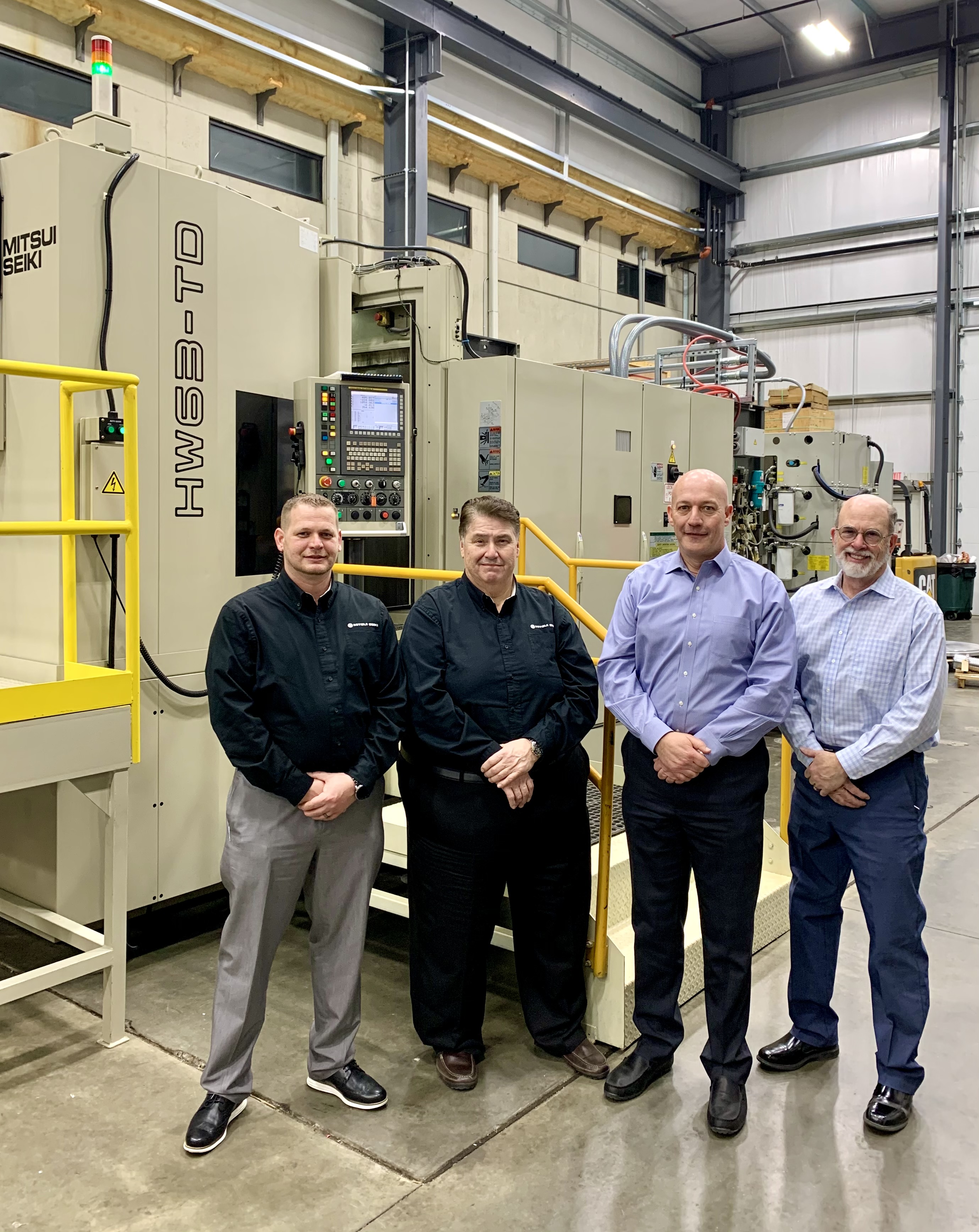 Mitsui Seiki in Indianapolis has produced the first commercial CNC machine tool that incorporates the Blue Arc HSEE (High Speed Electro Erosion) material removal process technology that is exclusively licensed by General Electric.
Mitsui Seiki in Indianapolis has produced the first commercial CNC machine tool that incorporates the Blue Arc HSEE (High Speed Electro Erosion) material removal process technology that is exclusively licensed by General Electric.
The first “HW63TD BA” machine has been installed at Aerodyn Engineering, Indianapolis, IN. There, the two companies – Aerodyn and Mitsui Seiki – are partnering on multiple process development applications for the existing and prospective customers in aerospace, outer space, mold and die, power generation, oil and gas, and other critical component industries.
The Blue Arc HSEE is a non-conventional rough machining process utilizing a controlled thermal metal removal method using a high-speed beam of electrons to erode and remove metal, driven by an electrical pulse between a tool electrode and a workpiece. Where EDM delivers a single point of material discharge, Blue Arc generates a multiple point discharge event resulting in rapid material removal.
Blue Arc technology eliminates the need for high-powered spindles, highly engineered cutting tools, and reduces wear on the machine kinematics. It is known to be an extremely efficient roughing metal removal method for hard, difficult to machine alloys, such as nickel and titanium alloys as well as stainless and tool steels. Certain alloy components are being rough machined in a fraction of the conventional milling time and with less stress on the machine as Blue Arc is a non-contact method. The process can cut machine-tool capital costs by 30 percent or more and cutting tool costs by 70 percent, according to the company.
The specific Blue Arc machine installed at Aerodyn, the Mitsui Seiki HW63TD BA machine is a high performance 5-axis machining center platform featuring a standard CAT50 spindle. Basic specifications include an X, Y, Z axes work envelope of 1000mm (39.38”) in X and 850mm (33.46”) in Y and Z. The B and C rotary axes are driven at speeds of 60 and 90 rpm respectively. The machine also includes Fanuc drive motors and a Fanuc F30iM-B control system.
“We are excited to have the revolutionary Blue Arc technology in our facility to continue its development and showcase its remarkable benefits to manufacturers of hard metal parts,” said Robb Hudson, president and CEO of Aerodyn Engineering.
Contact Details
Related Glossary Terms
- alloys
alloys
Substances having metallic properties and being composed of two or more chemical elements of which at least one is a metal.
- computer numerical control ( CNC)
computer numerical control ( CNC)
Microprocessor-based controller dedicated to a machine tool that permits the creation or modification of parts. Programmed numerical control activates the machine’s servos and spindle drives and controls the various machining operations. See DNC, direct numerical control; NC, numerical control.
- conventional milling ( up milling)
conventional milling ( up milling)
Cutter rotation is opposite that of the feed at the point of contact. Chips are cut at minimal thickness at the initial engagement of the cutter’s teeth with the workpiece and increase to a maximum thickness at the end of engagement. See climb milling.
- electrical-discharge machining ( EDM)
electrical-discharge machining ( EDM)
Process that vaporizes conductive materials by controlled application of pulsed electrical current that flows between a workpiece and electrode (tool) in a dielectric fluid. Permits machining shapes to tight accuracies without the internal stresses conventional machining often generates. Useful in diemaking.
- gang cutting ( milling)
gang cutting ( milling)
Machining with several cutters mounted on a single arbor, generally for simultaneous cutting.
- machining center
machining center
CNC machine tool capable of drilling, reaming, tapping, milling and boring. Normally comes with an automatic toolchanger. See automatic toolchanger.
- milling
milling
Machining operation in which metal or other material is removed by applying power to a rotating cutter. In vertical milling, the cutting tool is mounted vertically on the spindle. In horizontal milling, the cutting tool is mounted horizontally, either directly on the spindle or on an arbor. Horizontal milling is further broken down into conventional milling, where the cutter rotates opposite the direction of feed, or “up” into the workpiece; and climb milling, where the cutter rotates in the direction of feed, or “down” into the workpiece. Milling operations include plane or surface milling, endmilling, facemilling, angle milling, form milling and profiling.
- tool steels
tool steels
Group of alloy steels which, after proper heat treatment, provide the combination of properties required for cutting tool and die applications. The American Iron and Steel Institute divides tool steels into six major categories: water hardening, shock resisting, cold work, hot work, special purpose and high speed.
- work envelope
work envelope
Cube, sphere, cylinder or other physical space within which the cutting tool is capable of reaching.
